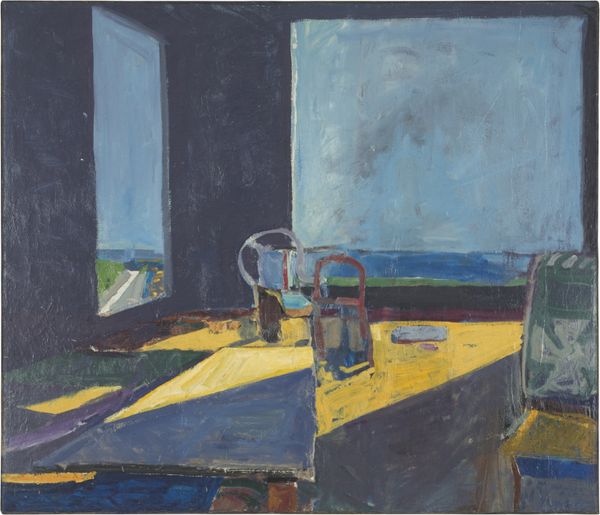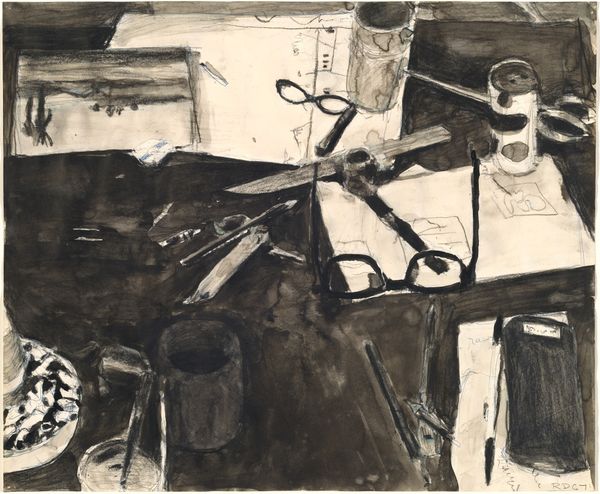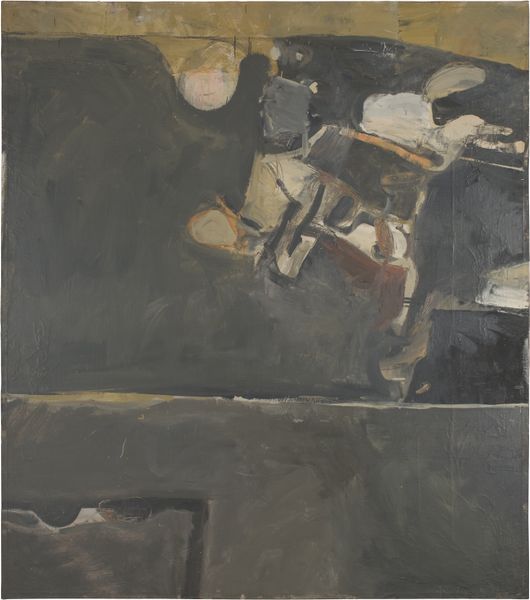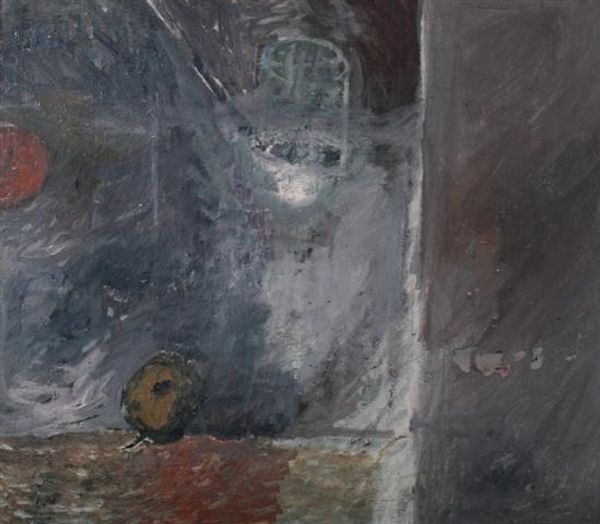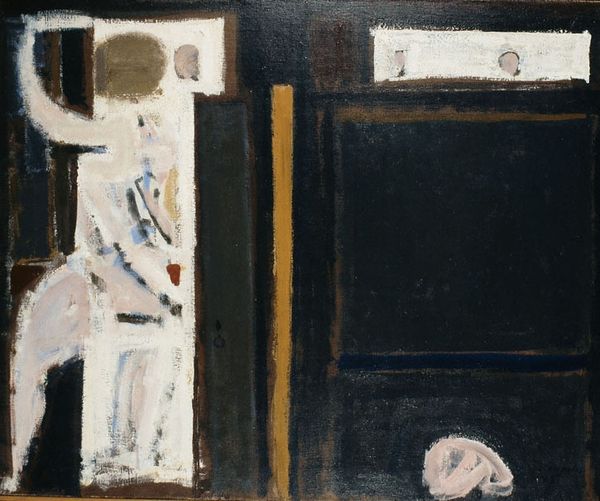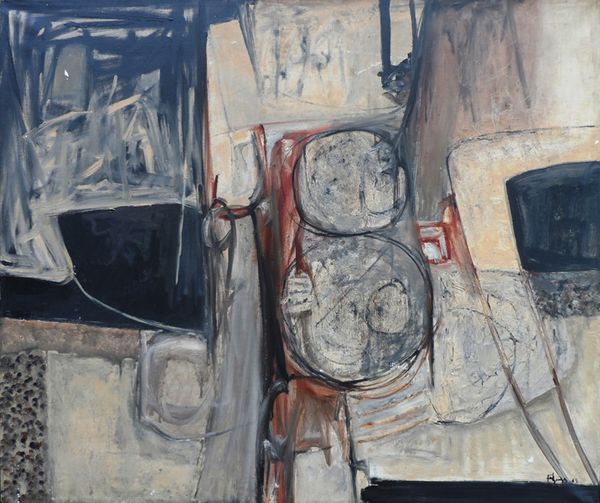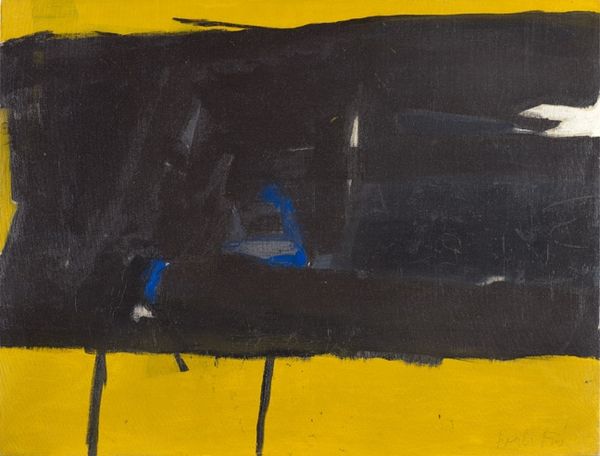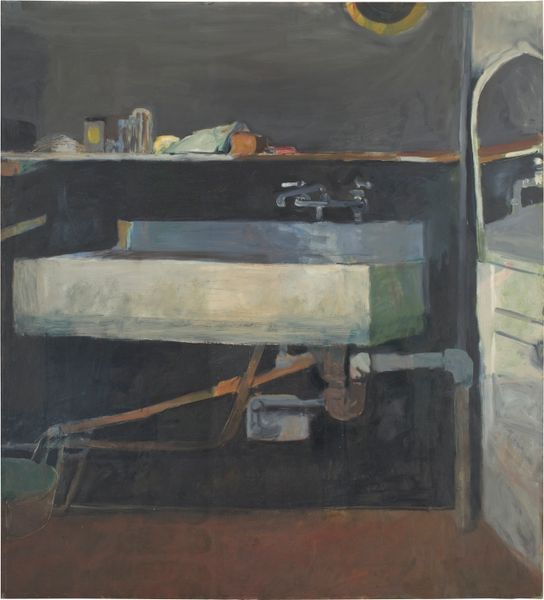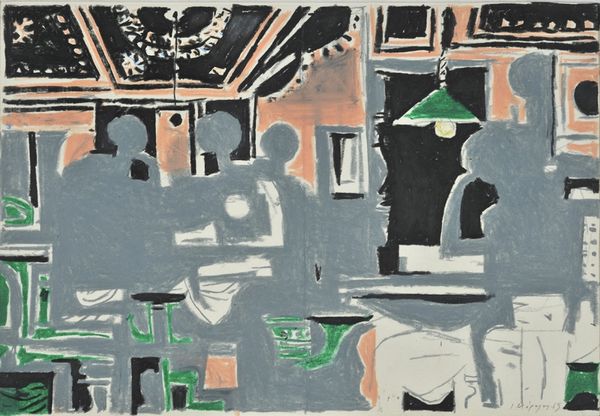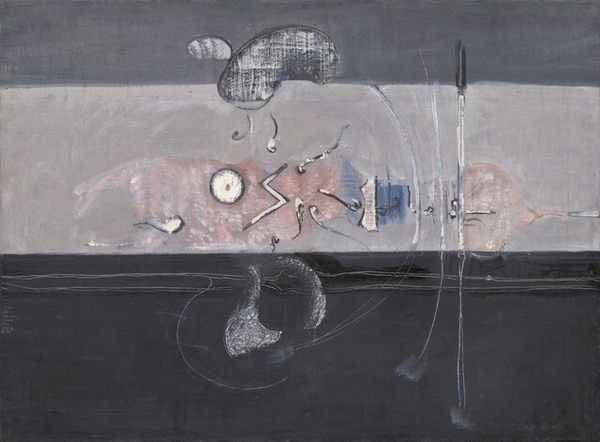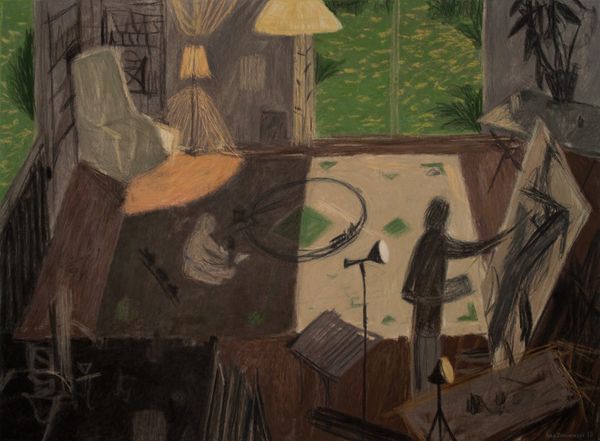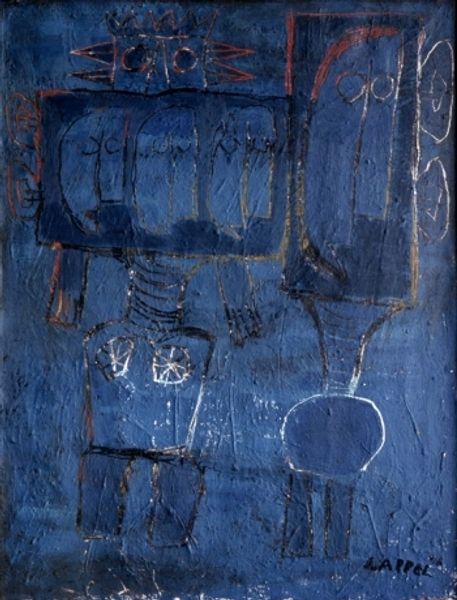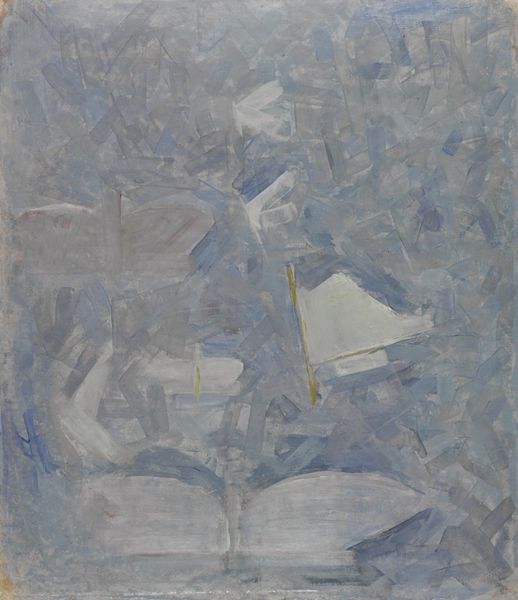
Dimensions: support: 914 x 1524 mm frame: 963 x 1572 x 69 mm
Copyright: © The estate of William Scott | CC-BY-NC-ND 4.0 DEED, Photo: Tate
Editor: So, this is William Scott's "Winter Still Life" at the Tate. It's a monochromatic, almost stark depiction of kitchenware. It feels both simple and profound. What do you make of it? Curator: It's interesting, isn't it? The limited palette gives it a sense of austerity, but the slightly wonky lines and shapes have a real charm. It feels like a memory of a kitchen, not a photograph of one. Perhaps a very personal impression, rather than a strict representation. What do you think? Editor: I agree, the skewed perspective makes it more emotionally resonant. It's not just pots and pans; it's the feeling of winter, the quiet of a kitchen. Curator: Exactly! Scott distills the essence of these everyday objects, elevating them beyond their functional purpose. It's beautiful, isn't it, how something so simple can evoke so much.
Comments
tate 6 months ago
⋮
http://www.tate.org.uk/art/artworks/scott-winter-still-life-t00119
Join the conversation
Join millions of artists and users on Artera today and experience the ultimate creative platform.
tate 6 months ago
⋮
From 1946 on Scott began to flatten the forms in his paintings. He generally painted from memory rather than from actual objects. But some of the articles he used in his still life paintings he kept around him in his studio; they included frying pans and saucepans, images which occur regularly in his work. These things were to become the abstract shapes found in later paintings and also had associations with his childhood memories. Scott said 'I find beauty in plainness, in a conception which is precise, a simple idea which to the observer must inevitably shock and leave a concrete image on the mind.' Gallery label, September 2004
